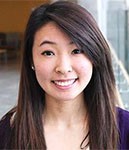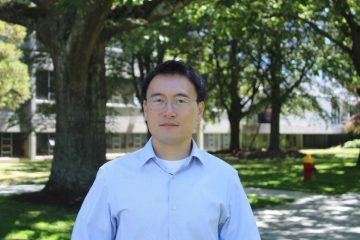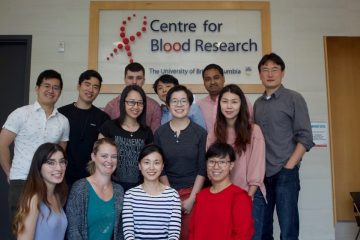 By Lily Takeuchi, Graduate Student, Brooks/Kizhakkedathu Lab
By Lily Takeuchi, Graduate Student, Brooks/Kizhakkedathu Lab
Prof. Hongshen Ma is a principal investigator at the Centre for Blood Research, an Associate Professor with the Department of Mechanical Engineering and School of Biomedical Engineering, Senior Research Scientist with the Vancouver Prostate Centre, and Associate Member of the Department of Pathology and Laboratory Medicine. Prof. Ma’s group works on developing new technologies for medical research and treatment.
Can you share with us a bit about your research background?
I completed my undergraduate training in Engineering Physics at UBC, then moved on to do my master’s degree at the MIT Media Lab. Later, I completed my PhD in Electrical Engineering at MIT where I conducted work related to microfabrication, the process of creating small scale structures. Towards the end of my PhD, I was interested in studying whether we can use these microstructures to manipulate cells, specifically, by creating structures at the similar length scale with cells to solve interesting problems in biology. One application of this is to study the mechanical properties of cells, particularly, deformability of red blood cells as it is important for a number of areas including blood storage, transfusion medicine and certain types of diseases such as malaria.

Professor Hongshen Ma
Tell us about your research group and some of the current themes of research in your lab.
I have a fantastic group of interdisciplinary students that work on a number of different projects. In one stream, we study how the deformability of red blood cells relates to the quality of cells under cold storage conditions, such as at a blood bank. We also study how and why certain donors may have red blood cells that can better maintain the quality during storage compared to others. In another stream, we are using deformability-based cell sorting to isolate circulating tumour cells for studying the basic biology of tumours.
We are also working on developing imaging-based sorting and processing of cells. By using machine learning to help us quantify different morphological characteristics of cells, we are developing faster methods to identify the cell types. We have also begun to do some work in developing technologies to measure secretions from cells.
What got you interested in your current field?
Both of my parents were biologists so I was always learning about biology since childhood. There are a lot of interesting and unsolved problems in biology and engineering tools could be incredibly useful to solve them.
What inspired you to become an engineer/researcher?
I love solving interesting problems! Being in biomedical engineering, you’re always learning something new. In my training there’s always been an emphasis on the importance of sitting at the boundary of disciplines. If you can cross disciplines, it will open up a richness of different problems and opportunities.

Ma Lab
How has your experience with the CBR impacted your research?
Fantastic! One aspect of the CBR is the benefit of being next to high-level experts and being inspired by the research around me. It is also a very professional environment for biological research. My trainees are able to interact with and learn from trainees in other groups and disciplines. We have been able to simultaneously draw on the community of people for collaborations as well as develop our own capabilities that are hopefully of benefit to other groups.
What excites you most about your work? What are you most proud of?
In terms of research, I’m very proud of being able to sort red blood cells based off deformability as it is a very unique capability and so far no other groups have been able to do the same. Going forward, we are excited to pursue our single cell sequencing and machine learning work. I’m also extremely proud of my trainees. They’ve all done fantastic work in my group and then go on to have great careers after their time at UBC. Many of them have been scooped up by major companies, such as Apple, Amazon, and 10X Genomics.
If you have any advice for trainees, what would it be?
Take prudent risks. Taking risks can be uncomfortable but can potentially allow you to pursue something great. Also, try to diversify by learning about other fields while focusing on doing something well that you can hang your hat on.
When you’re not in the lab, where can we find you?
I enjoy running through Pacific Spirit Park, exercising, and spend a lot of time chasing my two young children!
To find out more about the Ma lab research, visit: https://blogs.ubc.ca/hongma/


